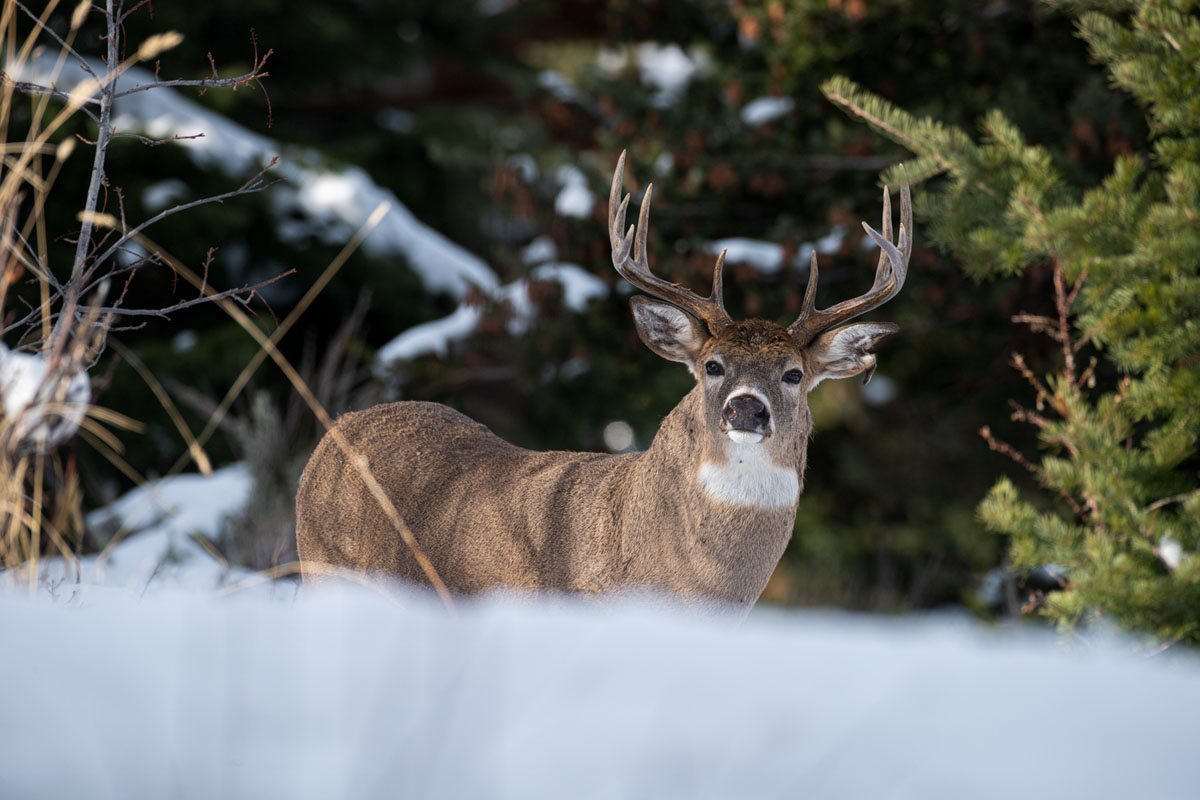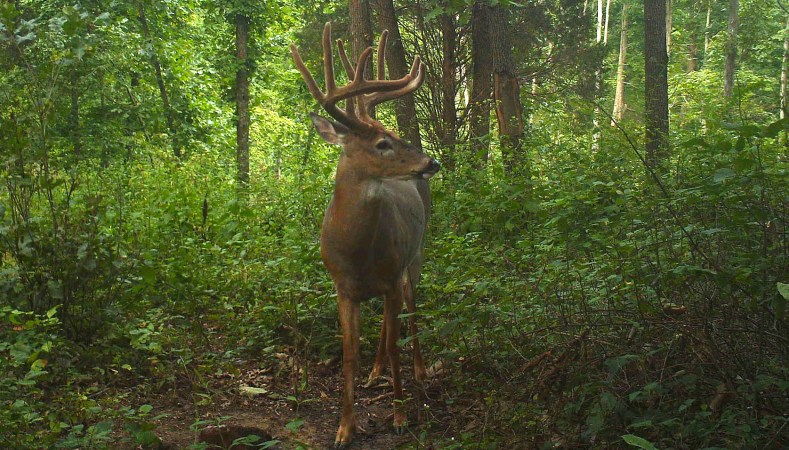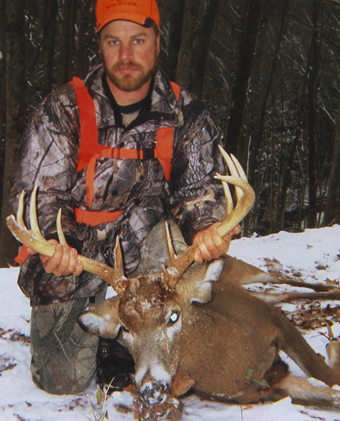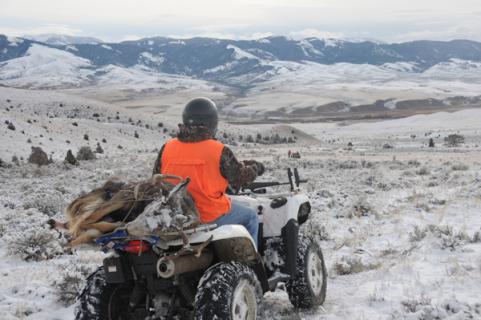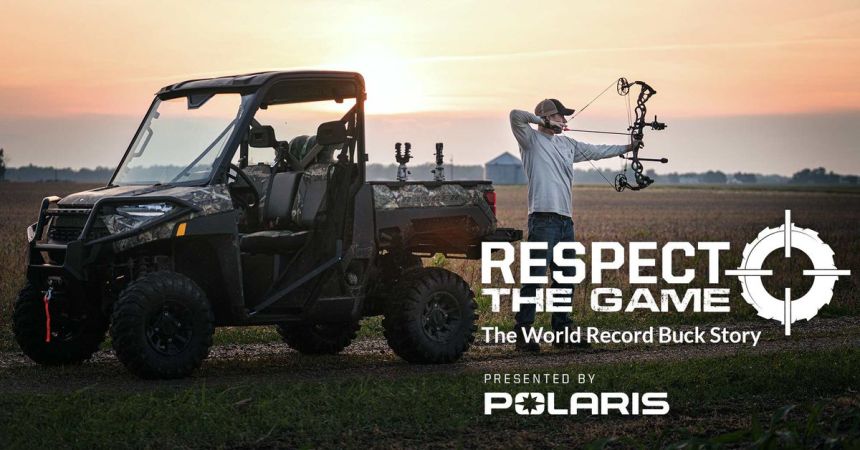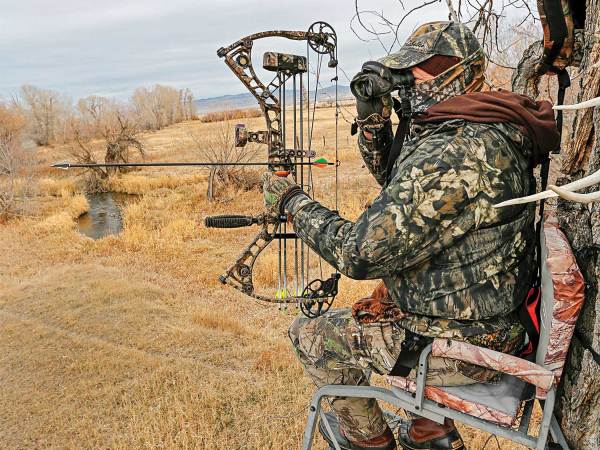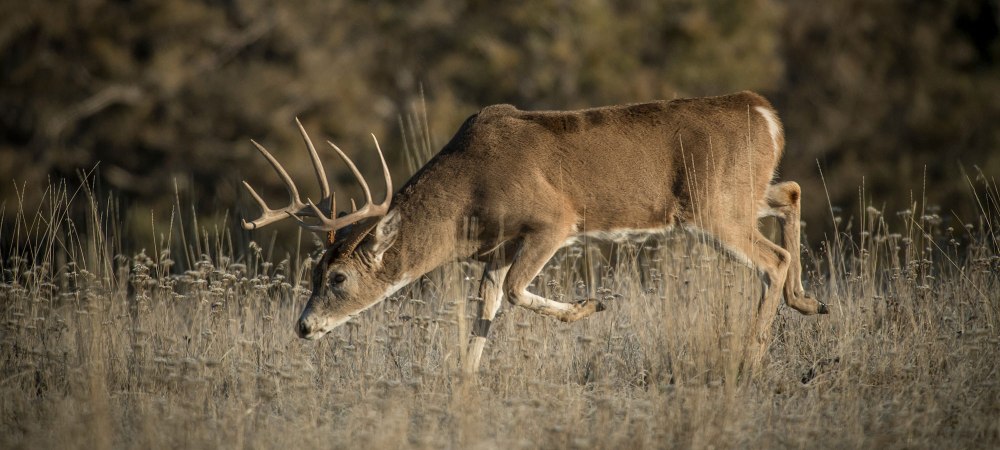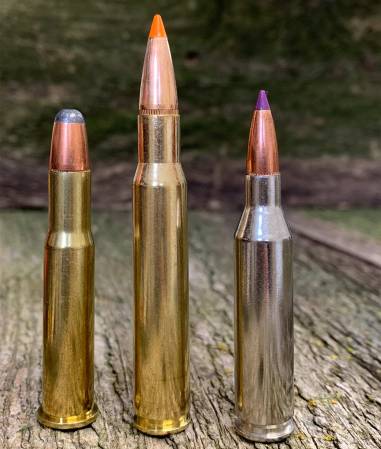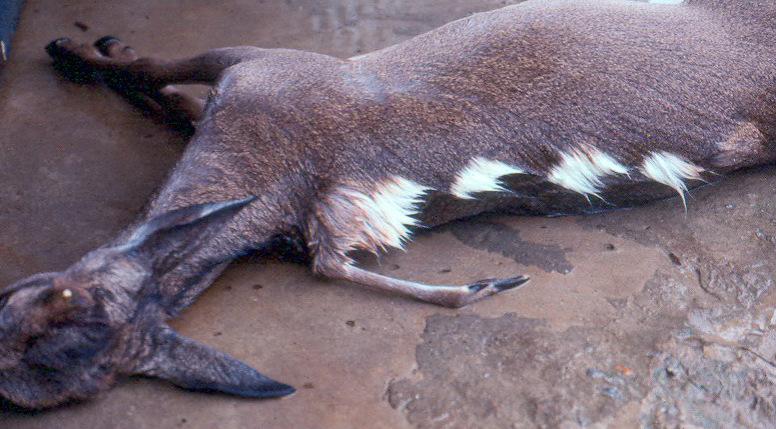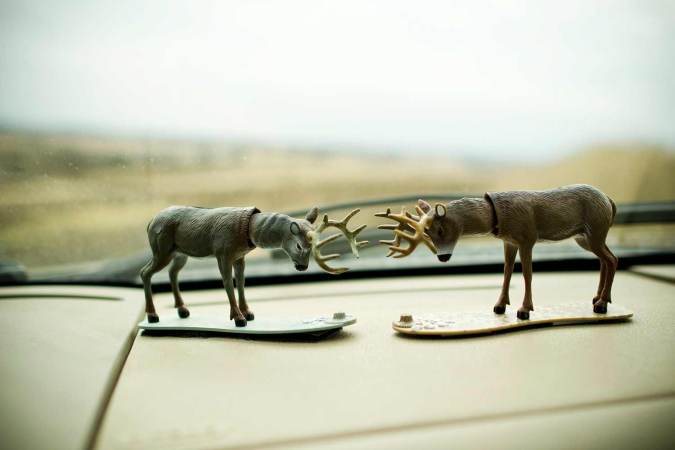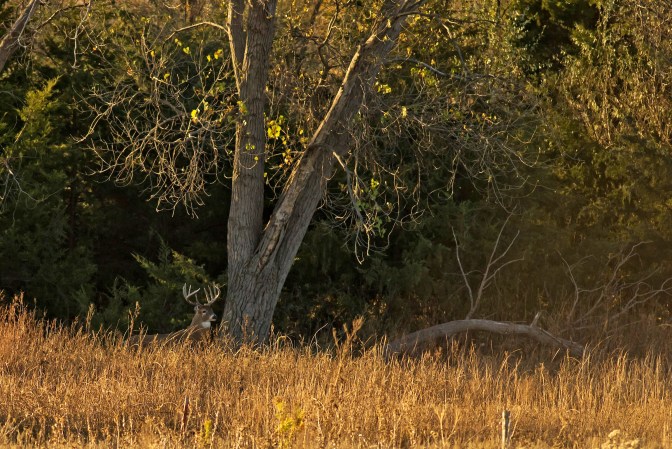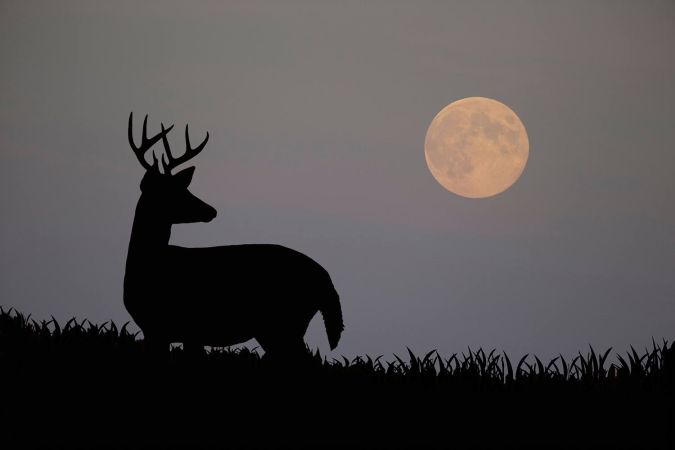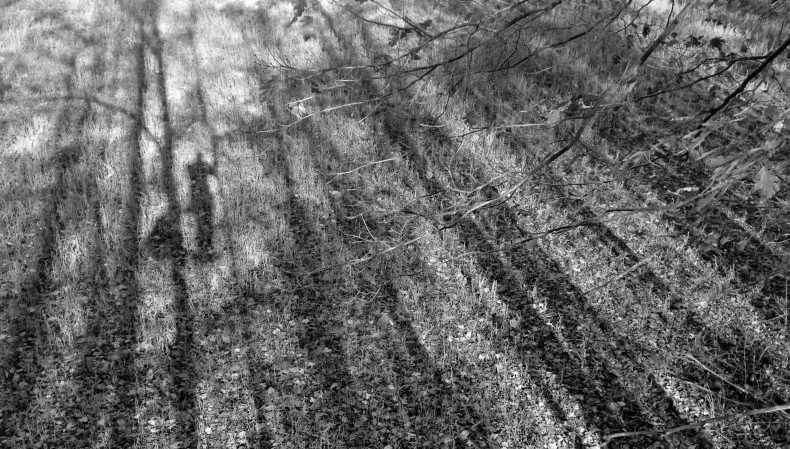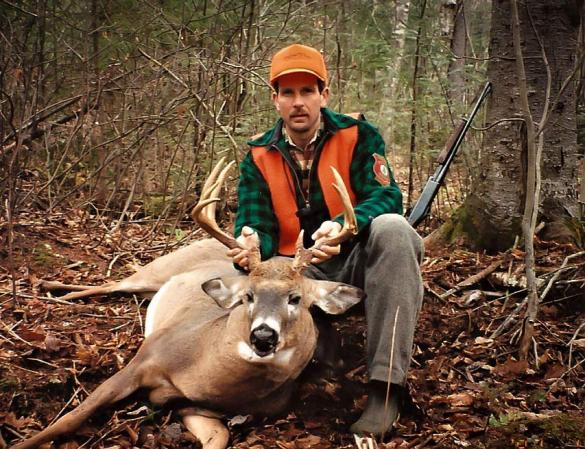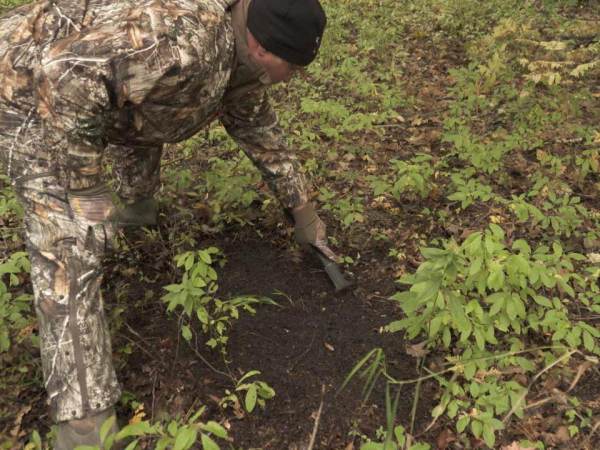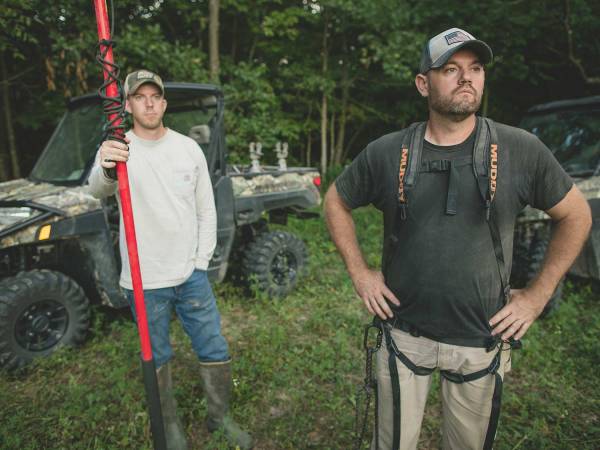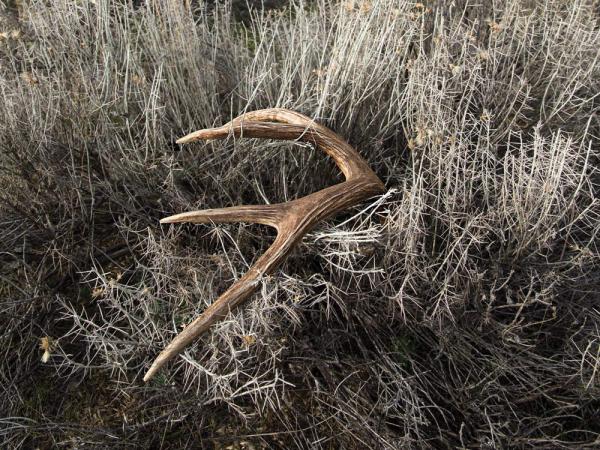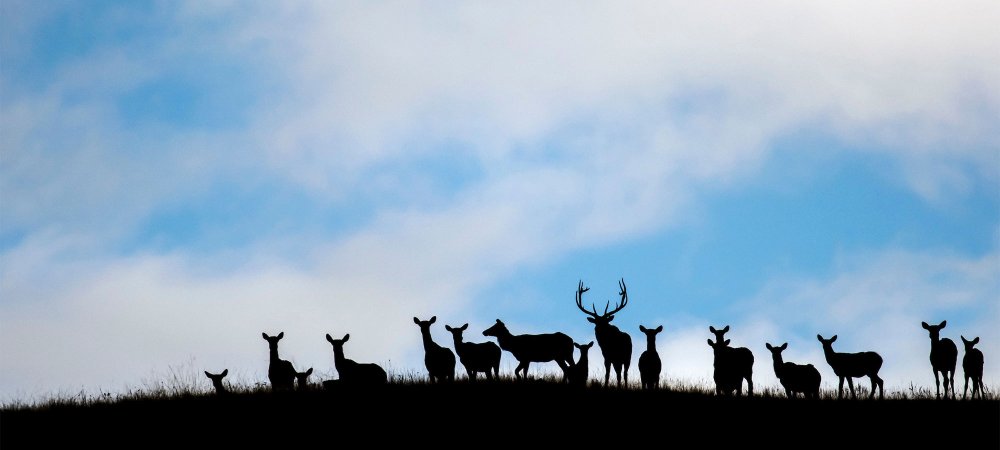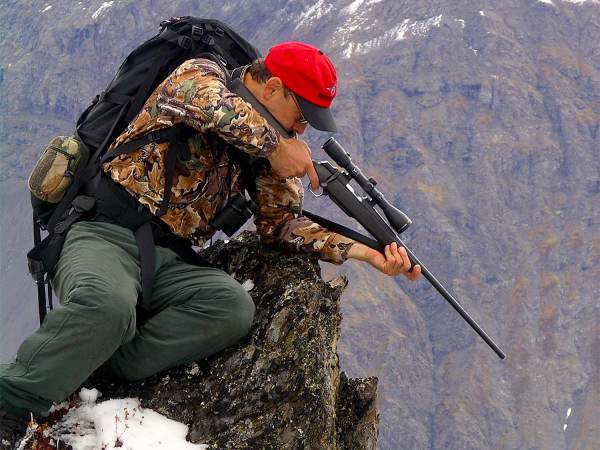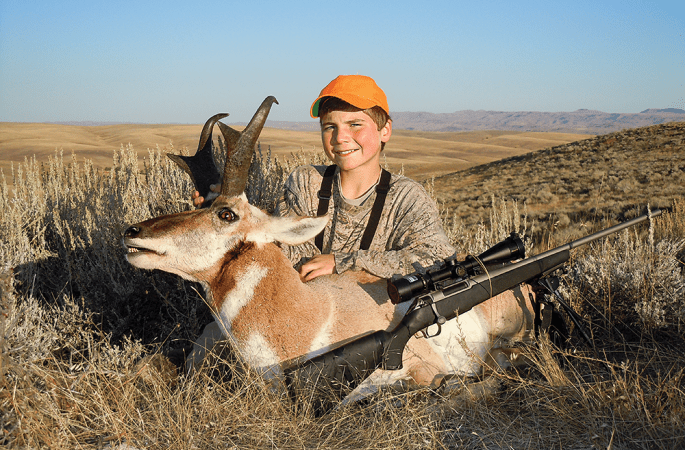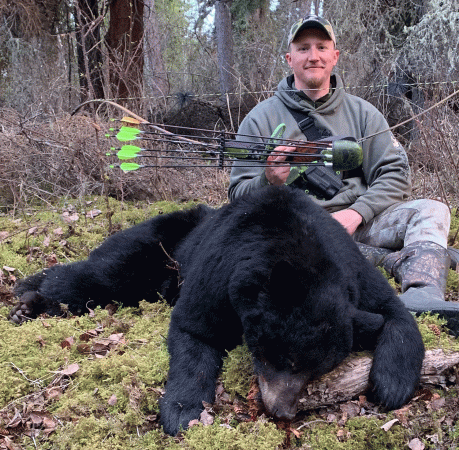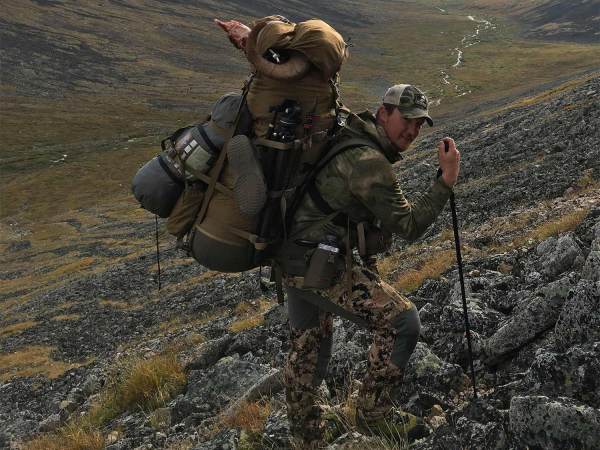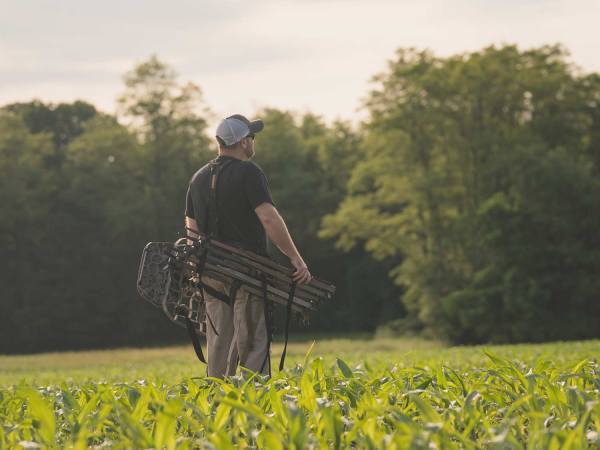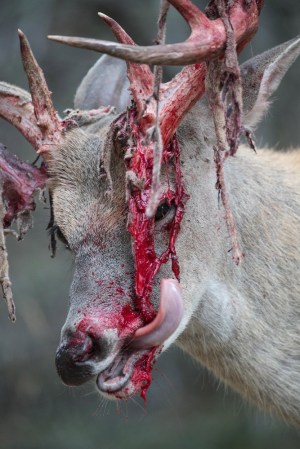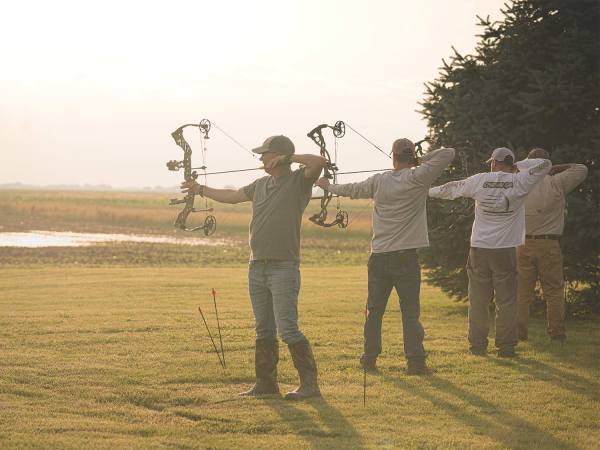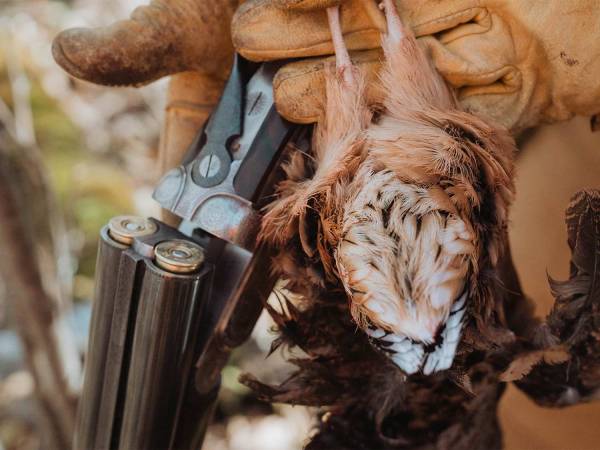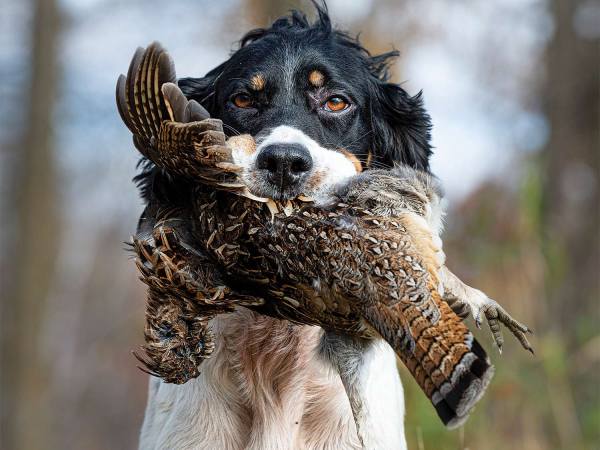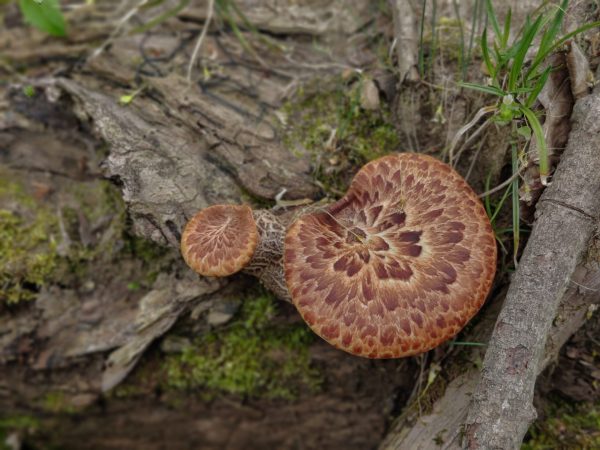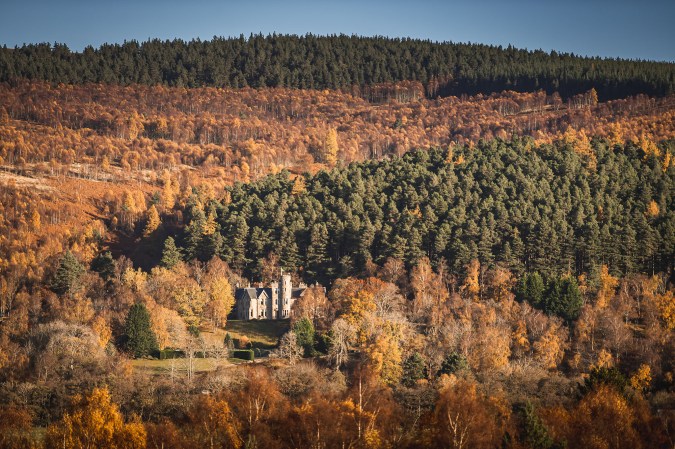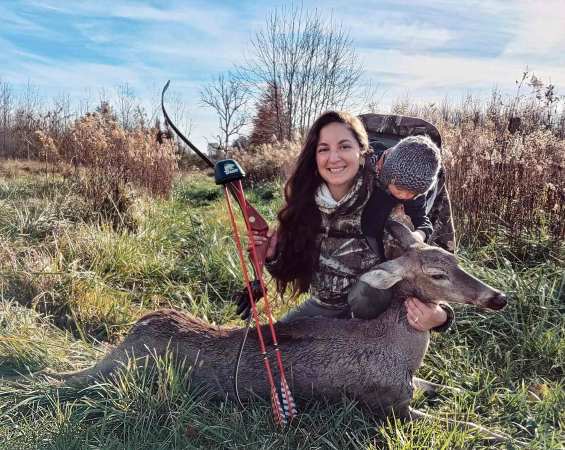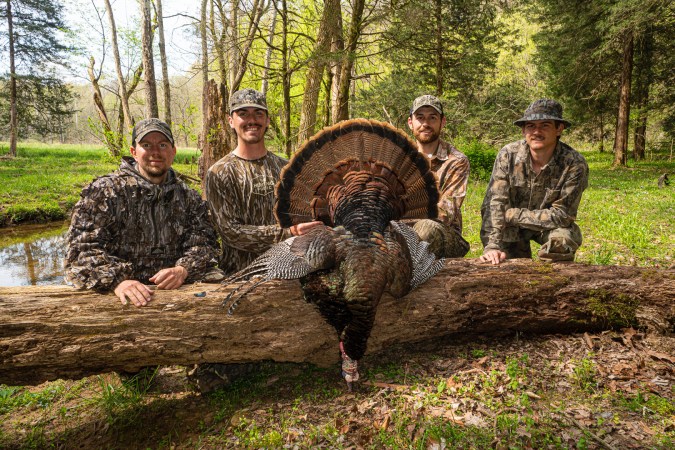For most whitetail hunters, the West’s steep, conifer-covered mountainsides—as high as 6,000 feet—don’t usually come to mind as ideal whitetail habitat. More like good habitat for muleys. But targeting mountain whitetails can be extremely rewarding.
Growing up in the Northeast and hunting deer in hardwoods and field edges, it took a significant adjustment for me to look at this terrain as fertile ground. Which, in truth, it probably isn’t; it’s more like whitetails carved out a living here, perhaps because of the limited human access. I don’t know what came first, the deer or the logging, but if I had to guess, it’s the edge habitat of logging roads carved into mountainsides, and subsequent clearcuts and new growth, that made this high country whitetail-habitable. Still, although it’s not necessarily deer-rich country, the fact that they’re hard to hunt allows many bucks to grow into trophies.
Prepare For A Hard Slog
Hunting here can severely test your faith and perseverance. You can walk eight to 10 miles a day, for days on end, without seeing a buck (although if you’re hunting the right area, you’ll see plenty of tracks). And the cover is so thick in places that only by sheer serendipity will your paths cross at the same moment. Which is why I maximize my odds by hunting late in the season when, at least in Montana, the bucks are rutting and snow is on the ground.
Like most Rocky Mountain denizens, the whitetails are not so much widespread as found in scattered pockets of good habitat. You can walk hundreds of yards of blocked-off logging roads without a hint of sign, then find small, concentrated areas of deer sign, typically at the heads of draws, finger ridges and saddles, used primarily as travel corridors, and in and along clearcuts and road edges where most food is found.
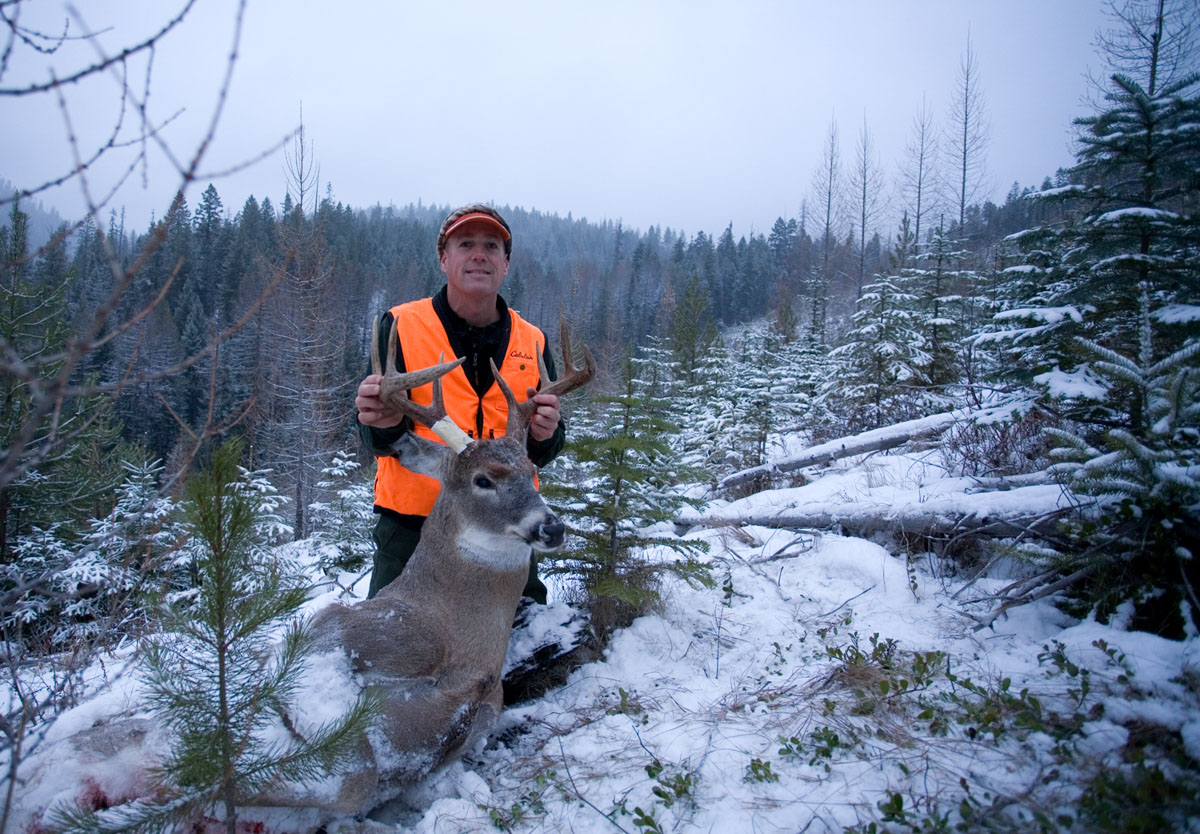
Hike to the Clearcuts for Mountain Whitetails
At least where I hunt, walking blocked-off Forest Service and timber-company roads is the only practical way to cover ground and have a chance of shooting a deer. These logging roads offer level paths into game country where slopes are often so steep you wouldn’t be able to keep your feet beneath you without grabbing hold of one tree branch after another. Where roads intersect gentler inclines, there is a chance to veer off to good glassing points or to follow a fresh track. But even where the terrain flattens out, the often impenetrable thickets of lodgepole pines and Doug firs make following even a smoking-fresh buck track futile. You often can’t see 10 yards, let alone 10 feet, and the noise you’d make pushing through thickets would scare everything ahead of you.
The main payoffs are usually the three or four clearcuts the roads access. Recent logging gives deer access to moss, buds, and newer growth at the ends of branches. Older clearcuts provide all sorts of food for mountain whitetails where brush and saplings flourish in areas exposed to sunlight. For much of the way in, though, your only shooting lanes are the roads themselves—20-yard gaps where shooting opportunities happen fast and can vanish in a split-second.
Ditch the Rifle Sling
My friend Orv Kuester, a former outfitter who introduced me to this area, used to tell his clients that you’re not hunting if your rifle is hanging from your shoulder. Truer words were never spoken for mountain whitetails, where deer sightings are often literally days apart; then a buck suddenly appears with little time for you to size up the situation and shoot. Trying to get a rifle off your shoulder and into an accurate shooting position wastes precious seconds, which is one reason I place my sling in my backpack and only use it for the hike out after legal shooting time or if a buck’s down. Also, given my light rifle (a Remington Model Seven, which is ideal for all-day still hunting), a sling swinging from side to side can make it harder to steady off-hand.
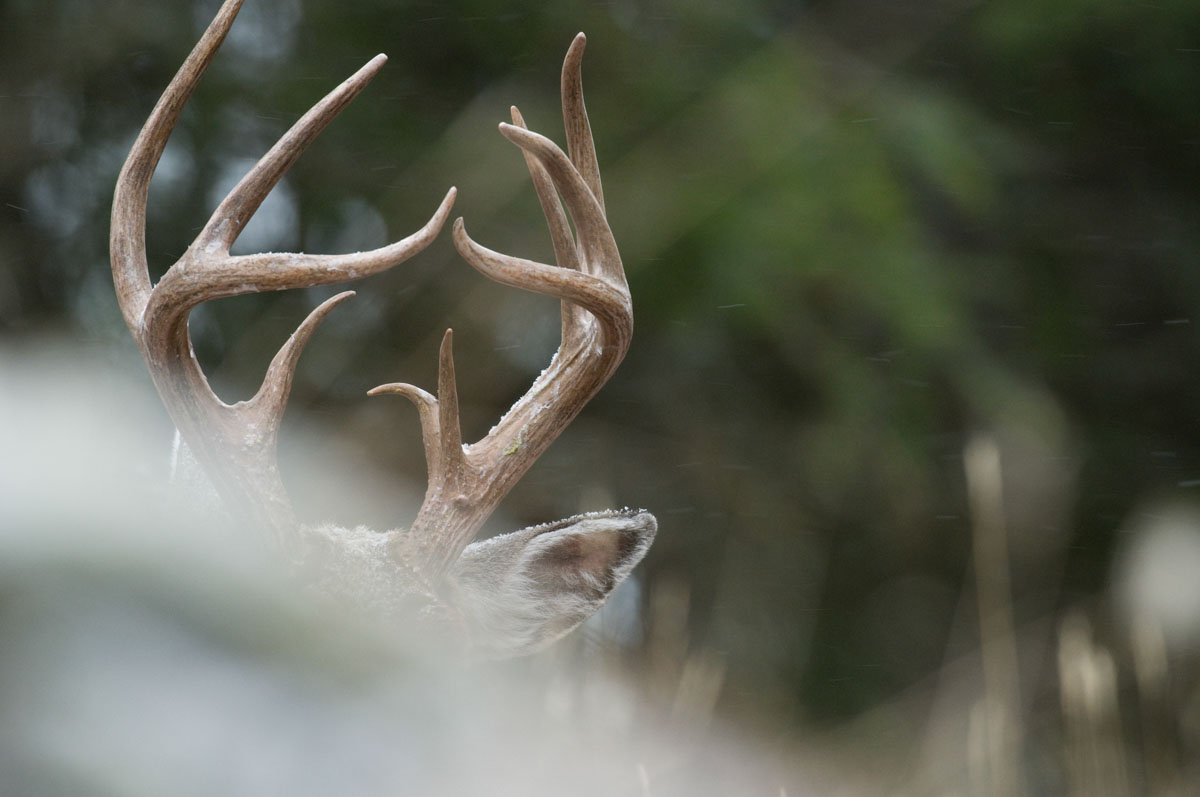
Be Ready to Shoot
I also leave my bipod at home, primarily to reduce weight (carrying any rifle all day will wear you out), but also because any bipod long enough to be of use here makes a rifle too barrel-heavy to carry comfortably. Shooting sticks are far more practical for steep country if you happen to spot a buck that’s farther away and unaware. The bottom line is you should be ready to shoot the instant an opportunity arises.
In the narrow confines of a logging road flanked by thickets, or after peeking over the outer edge of the road shoulder and hearing brush snapping in a clearcut below, acquiring your target as fast as possible is the difference between success and failure. To this day I am still haunted at a missed opportunity on a huge buck that crossed 60 feet of open road not 60 yards ahead of me, completely unaware of me until it reached the outer edge, where it stood broadside just long enough for me to look up and get my rifle halfway to my shoulder.
Be Slow, Quiet and Deliberate
Which brings up one of the major tenets of still hunting that’s even more important when the shooting lanes are narrow and the deer sightings infrequent: always be aware of your surroundings and never concentrate on distant hillsides or in one direction to the exclusion of noticing a target right in front of you. Had I not spent minutes staring into the woods below me, where I thought I heard movement, and instead periodically glanced the road ahead, I would have shot my biggest whitetail to date. I was literally a few seconds late on a bonafide 160-class buck.
If there was a silver lining, at least he didn’t see me until after crossing the road. That’s because I was standing still next to cover. The more time you’re motionless, the better chance of spotting something before it sees you. It’s fine to walk sections of road you know are dead zones at a normal pace, but when you approach places you’ve seen sign, stop and look around for a few minutes, then take a few steps and repeat. If you’re in really gamey country, slow it down even more.
When hiking steep mountainsides stay closer to whichever side—uphill or down—has the best habitat and is more open. That will allow you to see under boughs and maximize your effective viewing range. The flatter the incline and the more open the woods, the better off you’ll be staying somewhere in the middle. Even though you’ll be exposed more, you’ll maximize the area you can cover on both sides.
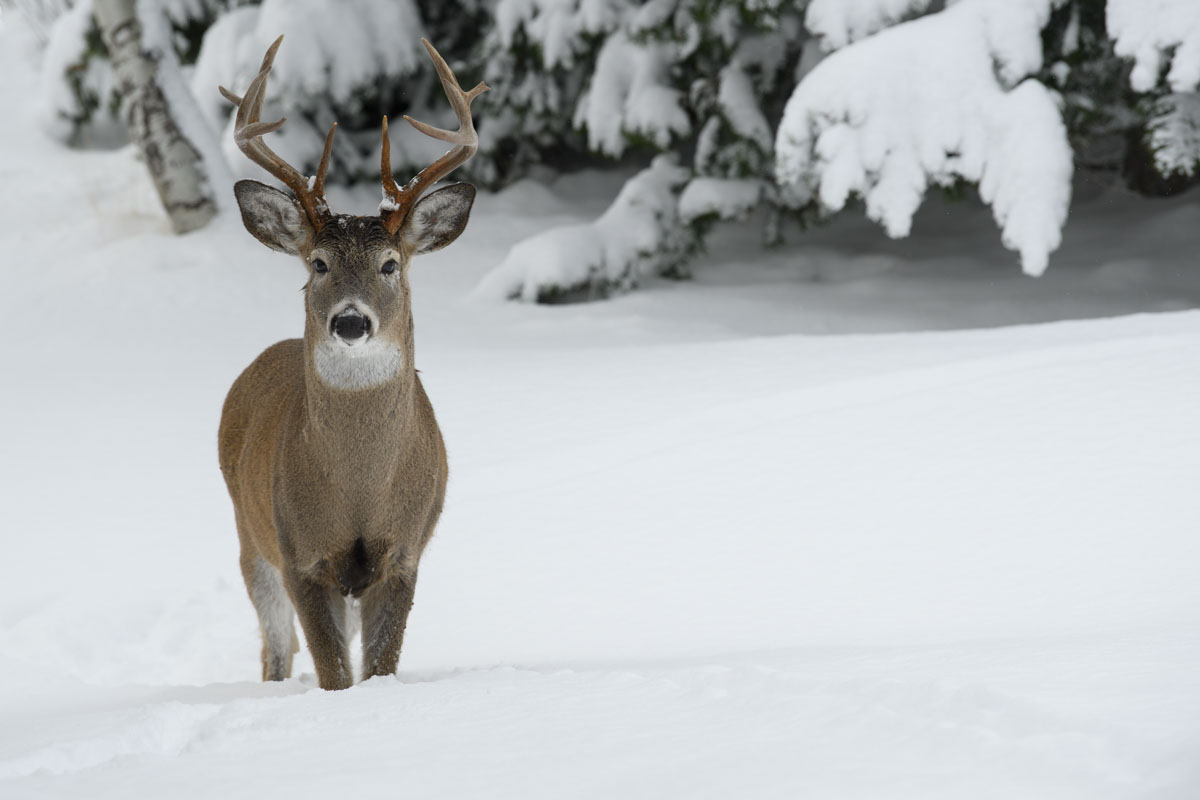
Bring Binos
A low-power binocular in the 6 to 8X range is invaluable for mountain whitetails. It’s powerful enough to detect game on opposing slopes and ridges and to see through nearby brush into the woods beyond, yet it won’t wear out your eyes with the constant refocusing a 10x requires. It also gives you a wide enough field of view for close-in glassing. Glassing keeps your pace slow and deliberate, but to maximize your opportunities, be sure to alternate between glassing specific areas and looking in all directions with just your eyes.
Pick Your Spots
When approaching clearcuts on the downhill side of a road, walk the inside edge until you’re clear of any brush along the shoulder that might obscure your view or block a shot. That way you’ll lessen the chance of a buck hearing or seeing you before you’re able to spot him and shoot. Typically, you’ll have to hit two or three openings to cover a large cut. Approach them deliberately, taking one step forward to expose a little terrain, stop and survey, then take another step to reveal more of the cut. Also, don’t just spend a few minutes before moving on. Clearcuts are usually where you can see the most country within shooting or stalking range, so plan on staying put and seeing what unfolds. Deer can stay stock still for minutes if they think they hear danger, and older clearcuts have plenty of deer-hiding cover.
Also get into the habit of staking out areas with lots of deer sign. You’ll have better odds of seeing game the longer you wait, versus taking the same amount of time walking another 400 yards to the next area with lots of tracks. When there’s so much country to explore, it’s tempting to keep moving, but if I had a buck on the wall for each time I walked through a promising area, only to return a half-hour later to find a big track planted in the middle of my boot imprint…
Rattle Up Mountain Whitetails
One effective strategy for staying put longer is to bring rattling antlers and use them after you’ve let a spot settle down. Rattling sounds can bounce off opposing ridges and carry into a lot of country, and chances are any roaming buck within earshot is going to come in for a look. I’ll typically rattle briefly, then wait 10 minutes, then rattle again for one to two minutes. Since it’s big country, a buck might take 20-plus minutes to show up. It sounds counter-intuitive, but due to the lower deer densities up high, the longer you stay put, the more opportunities you’ll get.
Don’t Take Hot Sign for Granted
One morning at first light, a few hundred yards in from a gate, I found two sets of fresh buck tracks where the logging road crossed a saddle at the edge of an old clearcut. The previous afternoon I’d found four other sets of big tracks crossing the road there. In steep terrain where rutting bucks travel far and wide looking for does, saddles like this one make it easier for them to cover lots of country. I had planned to stake out this spot for the first couple hours, but because the wind wasn’t in my favor, I decided to check out some clearcuts farther in.
Two hours later I headed back to the clearcut and saddle. I stopped short of the opening to glass through a veil of fir boughs; that way I could remain hidden while letting the woods and my heart rate settle down in case any deer heard my approach. A few minutes on I heard a buck grunting somewhere in the clearcut, and after slowly crawling to the outside shoulder of the road, where the woods started opening up, I spotted him following a doe. Although he’s far from the biggest deer I’ve seen in the high country, he now resides on my dining-room wall—a beautiful 5×4 that was the first buck I saw in over four full days and 30-plus miles of still hunting logging roads. That may not sound like great hunting to many whitetail hunters, but when you come across super-fresh buck tracks every day, you know it’s simply a matter of time—if you hunt smart—before everything comes together.
Read Next: The Best Rifles of 2022
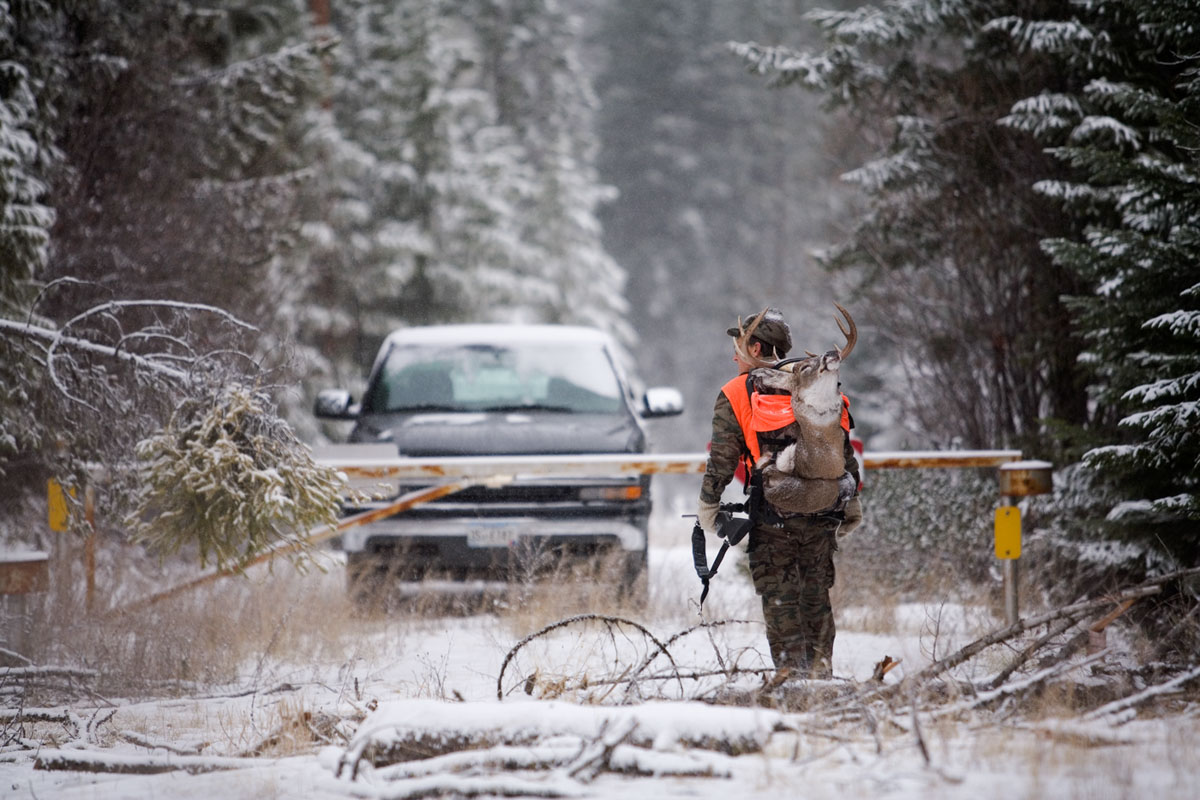
Essential Hunting Gear For Mountain Whitetails
The gear you take with you while hunting the mountains needs to keep you alive, be comfortable, and help you perform your best when it counts. All these items will do just that. —John B. Snow
Rifle: Seekins HAVAK Pro Hunter
This lightweight and accurate rifle is an ideal mountain hunting rig. It can make longer shots with confidence and handles in an easy, nimble fashion for fast shooting when you find yourself face-to-face with a whopper buck.
Ammunition: Hornady 6mm Creedmoor
The Precision Hunter line of ammo from Hornady lives up to the name. Over the last few years I’ve lost count of the number of animals I’ve taken with it chambered in cartridges as varying as .300 PRC, .308 Win., 6.5 PRC, 6.5 Creedmoor, and the baby brother of the family, 6mm Creedmoor. The ELD-X bullets has always performed as promised. It is accurate and upsets quickly in game while offering very good penetration.
Binocular: Leica Geovid Pro 8×32
You couldn’t ask for a better binocular for hunting mountain whitetails. Not only is the magnification perfect for still-hunting logging roads and glassing clearcuts, but comes with one of the world’s best rangefinding units coupled with Applied Ballistics shooting software. So in one handy unit you can spot and figure out your shooting solution without needing to fumble with multiple devices.
Boots: Cabela’s Iron Ridge Insulated Boots
Granted, a boot that works great for one hunter’s feet can be a disaster for another’s. One of the things I like about these are the soles, which are Air Bobs. Air Bob soles work great in cold, icy, mountainous conditions. So if these don’t fit to your liking, find another pair that does—as long as they are putting Air Bobs between you and the ground.
Base and Mid-Layers: Voormi Access NXT Pullover
This company make high-tech wool pieces that have become mainstays of my hunting kit. They are breathable, comfortable, don’t get smelly even after long and hard use, and come in varying degrees of water and wind repellency. This pullover is one of their most versatile pieces and travels with me everywhere.
Outer Layer: Stone Glacier De Havilland Pants
These pants strike the perfect balance between comfort, durability, protection from the elements. You can hike in them all day if needed, but they also work well for long sits in harsh weather. I’ve beat the hell out of mine and they are none the worse for wear.
